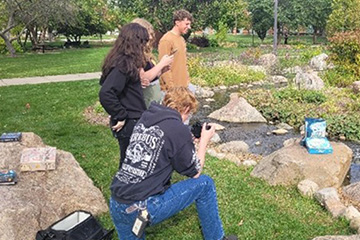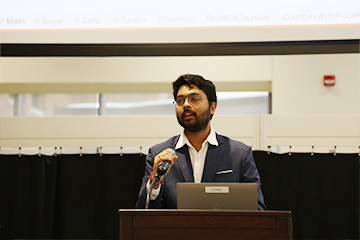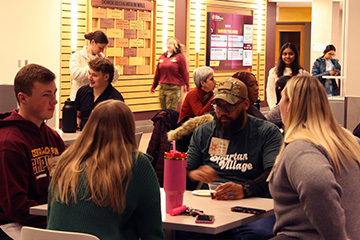Beyond Grit: A five-step pathway for pushing past self-doubt
Entrepreneurship faculty member draws from Silicon Valley research to help students build resilience and keep moving forward in moments of uncertainty
When Howard Haines and his co-researchers listened to recordings of interviews with 27 high-growth entrepreneurs in Silicon Valley, they expected to hear stories of unshakable confidence. Instead, they found something more relatable — and more instructive.
“Many of them talked about self-doubt,” Haines said. “We often think of entrepreneurs as super confident — and in many cases, overconfident — but they encounter challenges like everyone else. The short answer for how they keep going is that they choose to.”
That discovery led Haines, a faculty member in Central Michigan University’s entrepreneurship program, to dig deeper into the question: How do you push forward when you’re not sure you can? His answer is a five-step process that anyone — not just entrepreneurs — can use when facing a crisis of confidence.
“Self-doubt can create real constraints,” he said. “If you don’t believe you can figure it out, you probably won’t take action. But if you have tools to work through those moments, you can choose to keep going.”
- Step 1: Feel the emotion, then reset
Haines’ research showed that the first move is managing your emotional state. That might mean going for a walk, listening to music you love, spending time with friends, or remembering past successes. “The goal is to make those decisions before you’re in the funk,” he said. - Step 2: Reconnect with your why
Successful entrepreneurs anchor themselves in purpose. Haines helps students identify a “portfolio of passions” — things they care about, moments they’ve felt accomplished, and causes that motivate them — so they can return to them when motivation dips. - Step 3: Pick one focus
In times of self-doubt, narrowing your attention to one meaningful action can make all the difference. “The action itself helps the process, especially if it’s something you enjoy,” Haines said. - Step 4: Take action and execute
Persistence isn’t about doing everything at once — it’s about showing up consistently, even if it doesn’t feel like you are making progress. “It was just taking action and executing that made the difference in building the confidence back up that ‘I can do things’,” he said. - Step 5: Get a little help from your friends
Contrary to the lone-genius myth, Haines’ research found that entrepreneurs often rely on a network of people who can help them take all the other steps: regulate emotions, clarify priorities, and take action. “It’s a lot easier to keep going when you’re not going it alone,” he said.
Haines incorporates this process into his teaching, giving students a chance to practice it in real time. “Whether it’s an internship, a group project, or something in their personal life, these steps help them keep moving,” he said.
The result is more than just surviving challenges — it’s learning from them. “It’s not just about getting through,” he said. “It’s about using those moments to grow.”




